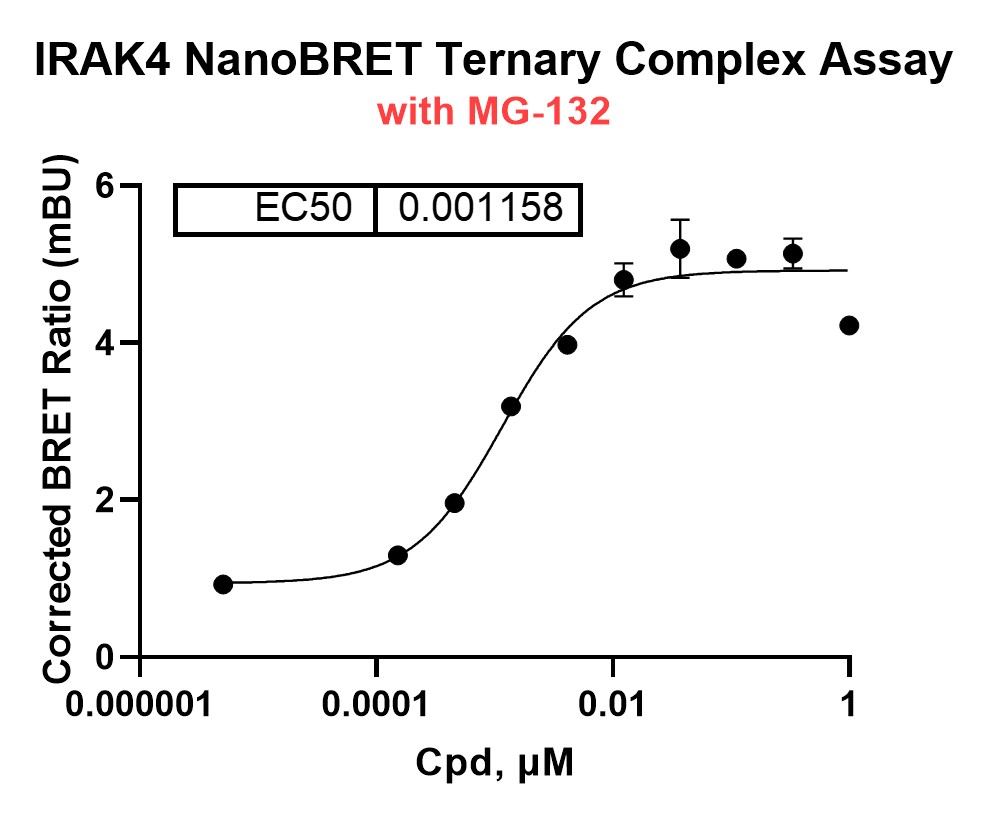The NanoBRET Ternary Complex Formation Assay is a state-of-the-art live-cell method designed to study the formation of ternary complexes, such as those formed by PROTACs (Proteolysis Targeting Chimeras) or other multi-component systems that involve three distinct molecules or proteins. This assay leverages the NanoLuc luciferase (NanoLuc) donor and HaloTag ligand (HL) fluorescent acceptor, enabling highly sensitive detection of complex assembly and interactions between three components in real time.
In a typical ternary complex setup, a PROTAC or similar molecule bridges two proteins, typically a target protein (such as a kinase) and an E3 ligase, leading to the formation of a stable ternary complex. The NanoBRET assay allows monitoring of this interaction by tagging one protein with NanoLuc luciferase (energy donor) and another with HaloTag. Upon binding of the third molecule (e.g., a PROTAC), the two tagged proteins are brought into proximity, enabling bioluminescence resonance energy transfer (BRET) between NanoLuc and the HaloTag ligand (HL), producing a measurable fluorescent signal.
As the ternary complex forms, the proximity between the NanoLuc and the fluorescent HaloTag ligand increases, leading to a strong BRET signal. The strength of this signal can be used to quantify the efficiency and dynamics of complex formation. In contrast, if the complex is destabilized or disrupted, the BRET signal decreases, allowing for assessment of the interaction.

▶ PROTAC drug discovery: Evaluate the ability of PROTACs to promote ternary complex formation between a target protein and an E3 ligase, facilitating downstream ubiquitination and degradation.
▶ Molecular glues: Study how molecular glues mediate interactions between two proteins that otherwise would not bind.
▶ High-throughput Compatibility: The assay is compatible with 96- and 384-well plates, making it suitable for high-throughput screening (HTS), which is valuable for screening large libraries of PROTACs or molecular glues.

In the presence of MG-132, the PROTAC is more effective at stabilizing the ternary complex because the degradation of the target protein is blocked, leading to a lower EC50. This is because a lower concentration of the PROTAC is needed to achieve the same level of complex formation when degradation is inhibited, compared to when degradation is active.
We value your inquiries and are here to provide you with tailored solutions for your drug discovery and development needs. Whether you have questions, require more information, or are interested in discussing potential collaborations, our team of experts is just a message away.
Feel free to reach out to us.